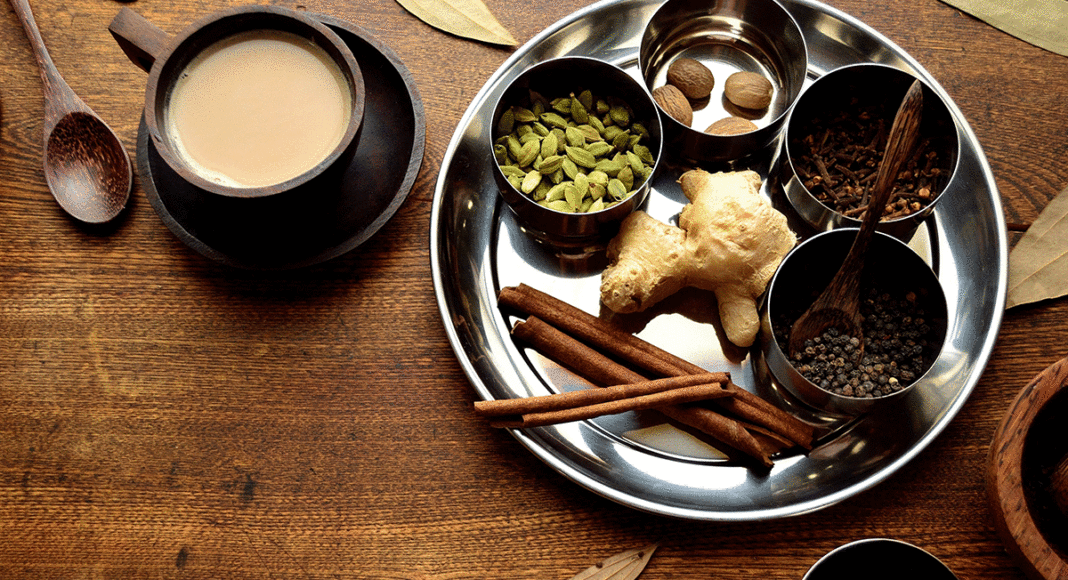Ah, fall, with its dry Indian summer days and golden light, and its basement of secrets. It’s the time of year, some say, when the veil between the living and dead is at its thinnest. Surely, it’s the season when the passage of time is felt most potently. And just when the sense of nostalgia and foreboding starts to darken the days’ edges, pumpkin spice everything emerges from its dormancy. As do viruses and bugs.
In Ayurvedic medicine, the autumn transition is a powerful time for adjustments to keep the body and mind healthy.
“Just like the cold and the hot in the air creates rainfall, the same thing is happening internally,” says Manish Chandra of Santa Cruz Ayurveda. “We have accumulated a lot of heat in the summer. Confronted with this cold front in the fall, the body creates mucus. We are nothing but nature, and our bodies are reflecting nature.”
Ah, mucus. A valuable component of the immune system, this fall secretion defends against viruses, which, like most evil things, are incubated by the cold. The gut is the body’s ultimate epicenter for immune defense, and in Ayurveda, the fall is a time to prepare the body’s digestive fire, or agni, to burn a bit hotter.
“We are preparing the body for the harsh winter,” says Chandra. “From eating salads and lighter cold foods at night, we are starting to cook warm, nourishing foods—root vegetables and grounding foods.” Accumulating some extra weight this time of year is considered an acceptable buffer by Ayurvedic standards, but it’s a cautious green light: no more than can be shed in spring.
Oleation, or massaging the skin with oil, is an Ayurvedic remedy and transdermal buffer against the dry air and wind, and Chandra recommends retiring cooling coconut oil for sesame oil, which is warming, in the fall and winter.
Ayurveda’s panchakarma—a 21-30-day detox that involves sweats, yoga, meditation, multiple-handed massages, enemas, and eating for one’s dosha—is traditionally set for fall and spring. It’s a total reset that Chandra, who will soon be enduring panchakarma in India, says can’t really be done in a few days. Chandra typically works with patients for at least six months in his Gut Healing Protocol program, which is customized to each individual’s doshic balance. But one of panchakarma’s primary intentions—to detox the body’s ama, or toxins built up in fat cells from undigested food—can be achieved through dietary shifts.
Warming foods, explains Chandra, refers to their post-digestive effect. Unlike summer’s watermelon, mint, cilantro and fennel, he says, spices like cumin, fenugreek, clove, mustard seeds, cinnamon, and ginger have a warming effect on agni. Could this explain mainstream America’s ravenous appetite for pumpkin spice everything?
While the long list of ingredients used in Starbucks’ Pumpkin Spice Latte includes, as of two years ago, actual pumpkin puree, it also includes about 49 grams of sugar—and the only real spices are those dashed on top. Chandra is not actually against sugar, but at such high doses, it’s downright harmful. We crave sugar because of stress, which depletes the doshic principle of vata, says Chandra. “And two, because we are not getting enough healthy fat. Fat burns like a log, and sugar burns like kindling,” says Chandra. Healthy fat, like ghee—“the best, if we are doing dairy”—curbs our cravings for more instant gratification.
One crisp morning after I speak with Chandra, I make his recipe for chai tea—a surefire stand-in for the sugar-laden grande to-go. Spilling across my friend Annica Rose’s kitchen counter, I measure half-teaspoons of fennel seed, black pepper, clove, cinnamon, cardamom, and a generous grate of fresh ginger and (improvised) nutmeg. After the pungent mixture simmers for 10 minutes, add black tea, nut milk (or milk of your choice) and a dab or five of raw honey. Strain and serve. Only after I pour the steaming liquid into two mugs does Annica open her cupboard to reveal a secret, along with a burst of contagious laughter, that anybody reading this far deserves: a jar of chai tea spices already mixed and ready to go from Staff of Life’s bulk bins.
For more information on Santa Cruz Ayurveda’s programs, massage offerings and cooking workshops, visit santacruzayurveda.com.













